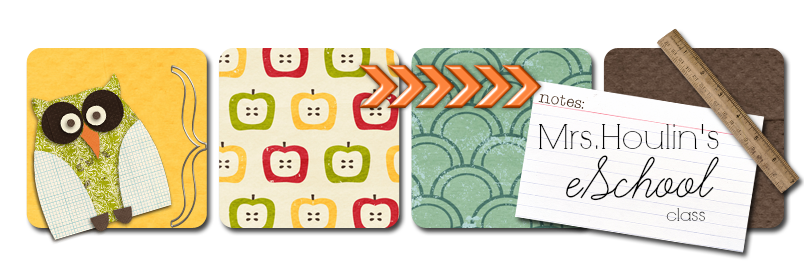Over the years of teaching, one thing I've definitely noticed is that girls typically like to read more than boys. It's harder to sell a boy on a book than it is to a girl. For some reason. Men are from Mars and Women are from Venus? Maybe. But if you start talking to a boy about what his interests are, he's essentially telling you what kind of books he would read.
Some boys really like fictional humorous stories (like Diary of a Wimpy Kid) while others would rather read about whatever bug they're obsessed with or their favorite sports team. If they don't like reading fiction, give them more than just fiction to read, and see if you start getting a better response when you say, "Hey it's independent reading time!" or "Want to go to the library?"
Example: Last year in second grade I taught a little boy named Max who "hated reading." His mom thought she had tried every kind of book, every book that was popular, books his friends were reading, etc. He didn't like them because he "just didn't like to read." I was feeling frustrated as well, but after some digging, I found out one of Max's passions was building and inventing. He loved making little inventions out of whatever was lying around, or making giant structures with Legos.
This was my light bulb moment.
I started finding some books on kid inventors or even just books with ideas of different things he could make- looking intentionally for ones that had written instructions instead of pictures. Did he love it? You bet! He loved it because it APPLIED to his life and he was INTERESTED in what he was reading. That's the key, folks!
This was also a light bulb moment for his Mom. She thought he SHOULD be reading fiction and novels, because that's what you're supposed to read, right? You HAVE to read those books for some classes. While that is true, if a love for reading isn't even there yet, let's work on that first. Then they'll be a lot more willing to try out some other stuff later on down the road.
If your boy says they don't like to read- I'm calling their bluff. They simply haven't found something that interests them...YET.
PAGETURNERS for ages 8-12


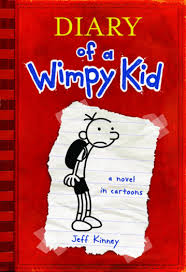
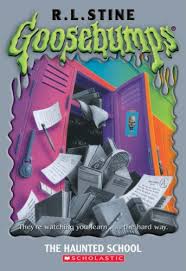
ASTRONAUT ACADEMY by Dave Roman
Hakata Soy leaves his past as the leader of a superhero team to
attend Astronaut Academy, a school on a space station orbiting Earth.
He hopes to make a fresh start in life, but his heroic past keeps
catching up with him.
CHARLIE JOE JACKSON by Tommy Greenwald
Charlie Joe shares the tactics that have gotten him all the way to
Middle School without EVER reading a whole book. Reluctant readers ready
to learn his secrets will find instead that they have just finished
(and enjoyed!) an entire book.
DIARY OF A WIMPY KID (Wimpy Kid series) by Jeff Kinney
Writing and drawing his stick-figure pictures in his new journal
helps Greg deal with middle school, overbearing parents, and two
brothers.
THE HAUNTED SCHOOL (Goosebumps series) by R.L. Stine
Tommy has a hard time making new friends at his new school. And the
school is big--so big, Tommy gets lost. And that's when he hears the
voices, kids crying for help, coming from beyond the classroom walls...



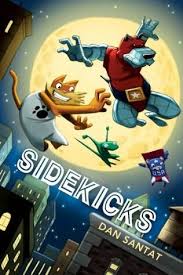
HERO by Mike Lupica
Fourteen- year-old Zach Harriman knows he has a pretty amazing dad.
He accepts that his dad’s job as a government agent with a high
security clearance means that Zachary must be kept in the dark about
much of what he does. When Zach’s father dies in an airplane crash,
Zach starts to learn just how many secrets his dad really had, including
his super-hero powers--and that the powers are hereditary.
THE LIGHTNING THIEF (Percy Jackson and the Olympians series) by Rick Riordan
Percy is about to find out the truth about the father he's never
met. "Lost at sea" is all his mother has ever told him. Well, Percy's
father is a god. A Greek god. A real one. And that makes Percy a
demigod, a half-blood, and he's now in mortal danger.
MIDDLE SCHOOL: THE WORST YEARS OF MY LIFE (Middle School series) by James Patterson
Middle School doesn’t begin well for Rafe Khatchadorian. Between
run-ins with the school bully, Miller “The Killer” and a book of rules
that the school actually takes seriously, to say Rafe is disillusioned
with the educational system would be understatement. And so it’s totally
understandable when his best friend, Leonardo, suggests that Rafe set
out to break every rule in the book.
SIDEKICKS by Dan Santat
In this graphic novel romp, Superhero Captain Amazing needs a new
sidekick. Enter four super pets, all vying for the coveted spot as his
right-hand man… er… animal.
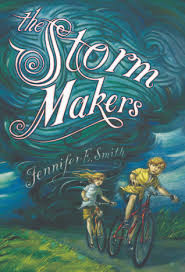



THE STORM MAKERS by Jennifer Smith
Twins Ruby and Simon move to a Wisconsin farm, and suffer the
consequences of the worst drought in history. Enter MOSS, the Makers
of Storm Society, and Simon discovers he holds powerful weather-changing
powers.
SWINDLE (Swindle series) by Gordon Korman
Griffin sells an old Babe Ruth baseball carp to a memorabilia shop,
where the owner gives him 120 bucks for the card, claiming it is a
knockoff made in 1967. What a liar! Griffin soon sees the dealer being
interviewed on TV, showing the selfsame 1920 baseball card, worth a cool
million. Griffin assembles a heist team and together they plan to steal
back that card.
THE UNWANTEDS and others in the series by Lisa McCann
In Quill there are three types of people: Wanteds, Necessaries, and
Unwanteds. Wanteds, as their name suggests, are the most valued members
of society. Necessaries are tolerated for whatever menial skill they may
possess. And Unwanteds, typically those showing a flare for creativity
and resistance to conformity, are put to their deaths. Or so the
Quillians think.
THE WITCHES by Roald Dahl
A recently-orphaned boy stumbles upon the yearly meeting of the
Royal Society for the Prevention of Cruelty to Children while staying at
a posh hotel. But wait. These are not ordinary ladies. Alas, the group
is actually made up of nasty witches, who are meeting to hatch a hideous
plan to turn all of the children in England into mice.

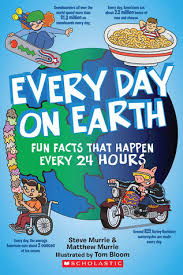
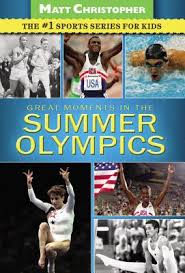
BABY MAMMOTH MUMMY by Christopher Sloan
The discovery of baby mammoth Lyuba allows for a never-before-seen inside look at prehistoric Sibera, 31,000 years later.
EVERY DAY ON EARTH: Fun Facts That Happen Every 24 Hours by Steve & Matthew Murrie
Your taste bud cells are replaced at a rate of 50,000 a day. Almost
40,000 trees are cut down every day just to make paper bags. What else
happens around the Earth in the span of a day?
GREAT MOMENTS IN THE SUMMER OLYMPICS by Matt Christopher and Stephanie Peters
Relive great moments in Olympic summer sports history, especially in the games of Track and Field, Gymnastics, and Swimming.


GET THE SCOOP ON ANIMAL POOP by Dawn Cusick
There comes a time in every kid’s life when poop becomes an object of
fascination, and this entertaining and informative introduction to
coprology, the study of feces, is sure to satisfy every imaginable
scatological curiosity.
NATIONAL GEOGRAPHIC KIDS ALMANAC 2013
TRANSITIONAL BOOKS for ages 7-10


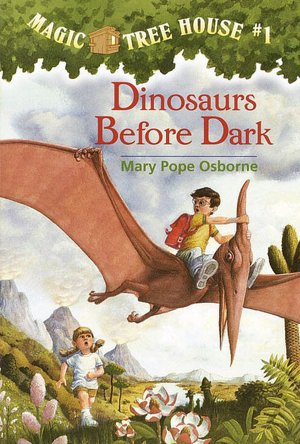

BAD KITTY GETS A BATH and other titles by Nick Bruel
You think you have a problem pet that rules your roost? Get a load
of this quintessential bad kitty, a sleek, black, rowdy ruffian who is
none too happy about getting a bath. OK, that’s an understatement.
THE ADVENTURES OF CAPTAIN UNDERPANTS (Captain Underpants series) by Dav Pilkey
George and Harold hypnotize their principal, mean Mr. Krupp, and turn him into their superhero creation Captain Underpants.
DINOSAURS BEFORE DARK (Magic Tree House series) by Mary Pope Osborne
A mysterious treehouse whisks Annie and Jack to the past--and in this
first novel, that means the land of the dinosaurs. But how will they
get home?
DRAGONBREATH: CURSE OF THE WERE-WIENER (Dragonbreath series) by Ursula Vernon
At lunchtime in the school cafeteria that day, Danny's overly large
and bright red hot dog bites Wendell's finger. By the next day,
Wendell's finger has turned candy-apple red, and his back is growing
hair. Sneaking into the cafeteria's walk-in freezer to investigate,
Danny finds an unusual package of hot dogs with the label "Were-Wieners,
a product of Transylvania."

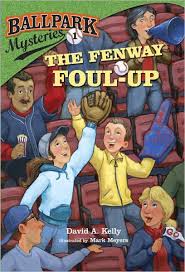


EVERY THING ON IT by Shel Silverstein
A new collection of 30 never-before-seen poems and drawings from the remarkable writer and artist Shel Silverstein.
THE FENWAY FOUL-UP (Ballpark Mysteries series) by David Kelly
Can Mike and Kate solve the mystery of who stole the Red Sox's star
player's lucky bat, right in front of everyone's noses? Each book in
this series is set in a different American ballpark stadium.
HORRID HENRY (Horrid Henry series) by Francesca Simon
Horrid Henry and his neighbor Moody Margaret set out to make the grossest sludge ever glopped together.
THE ONE AND ONLY IVAN by Katherine Applegate
Ivan barely remembers his life before the mall. He has some wonderful
friends: there’s Stella, the stoic elephant twice his size; there’s
Bob, the homeless-by-choice dog who sneaks into the mall every night and
sleeps on Ivan’s big belly; and there’s Julia, the human daughter of
George the custodian, who does her homework by Ivan’s domain every
evening and who shares a love of art with him. Yes, that’s right: Ivan
is an artist.



SQUISH: SUPER AMOEBA by Jennifer Holm
Squish is an amoeba in elementary school with a good heart but facing a
lot of obstacles. A mysterious enemy is threatening our hero, as if the
usual pitfalls of weird parents, obnoxious bullies, homework, and more
weren't enough. Kids will really identify with this unlikely hero who
has to save the world even though all he really wants to do is get
through the week.
THE TRUE STORY OF THE THREE LITTLE PIGS by Jon Scieszka
Alexander T. Wolf would like to set the record straight. He says, "I don't know how this whole
Big Bad Wolf thing got started, but it's all wrong . . . The real story is about a sneeze and a cup of sugar."
ENCYLOPEDIA PREHISTORICA by Robert Sabuda
A look at all things dinosaur, packing in facts on more than 50
species, and the six major watercolored pop-ups are spectacular.



HENRY AARON’S DREAM by Matt Tavares
Every kid has a wish–a dream for his or her own future. Henry Aaron
was no exception. He wanted to play baseball, but baseball stadiums in
his hometown of Mobile, Alabama in the 1940s were for “WHITES ONLY.” It
took perseverance, enormous talent, and courage for Henry Aaron to not
only hold onto his vision, but also to make it a reality.
WEIRD BUT TRUE: 300 Outrageous Facts by National Geographic Kids
Did you know that... The world’s oldest pet goldfish lived to be 43
years old? The world’s longest soap bubble was as long as four school
buses? On Neptune, the wind blows up to 1,243 miles an hour? The whole
family will be dazed and amazed by this remarkable assortment of crazy
but very true facts.
YOU NEVER HEARD OF SANDY KOUFAX? by Jonah Winter
For six years, 1961-1966, Koufax was known as the greatest lefty
pitcher ever. Pittsburgh Pirates Hall of Famer, Willie Stargell, said,
“Hittin’ a Koufax
fastball
was like tryin’ to drink coffee with a fork.” In high school, this
Jewish kid from Brooklyn aced every sport, and soon the scouts came
calling. This has to be the coolest-looking sports biography ever.
Happy reading! :-)

